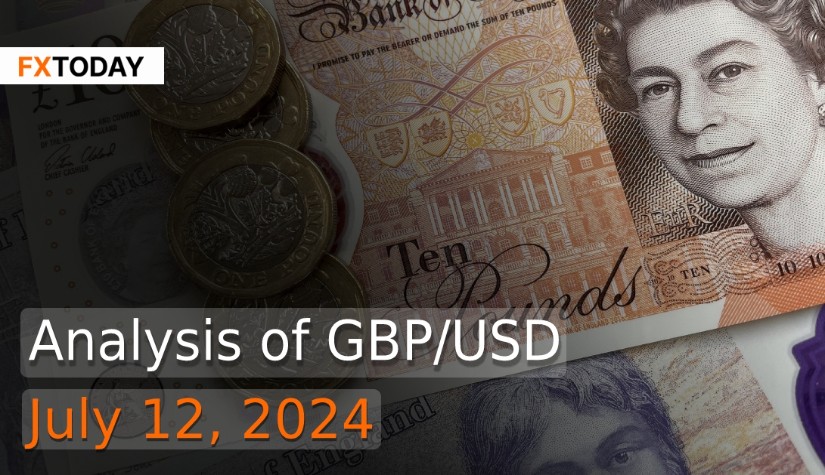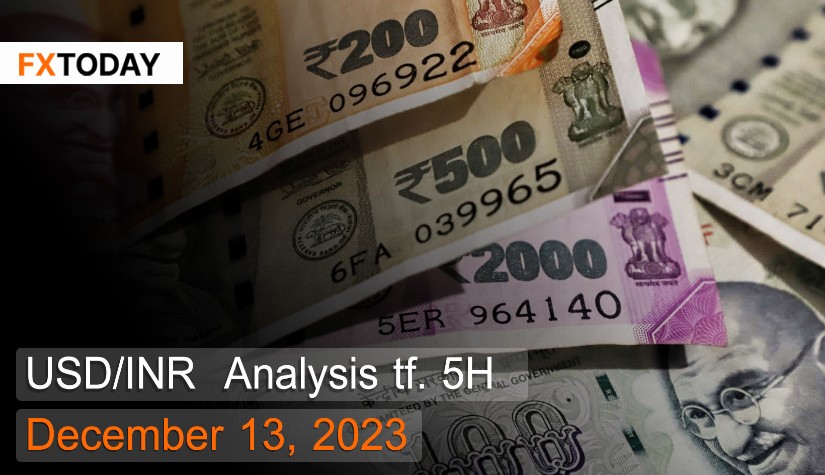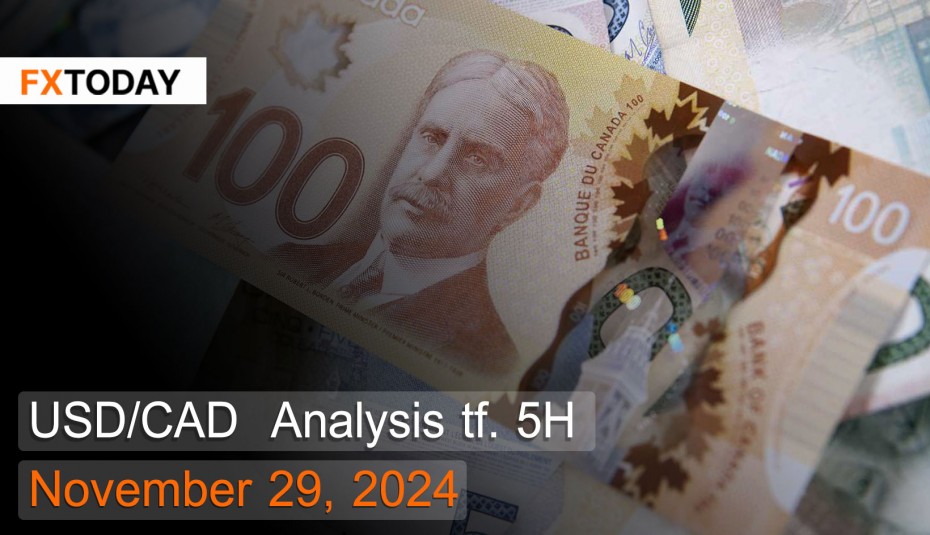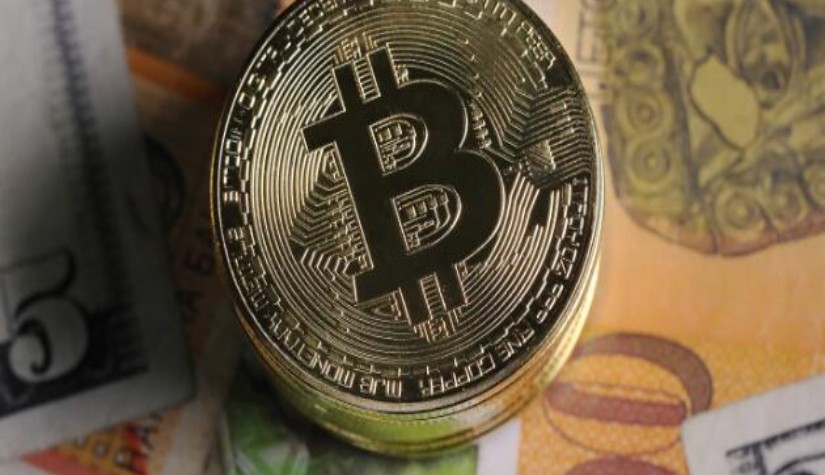Sterling Hits One-Year High Amid BoE Remarks and Strong GDP Data, Delaying Rate Cut Expectations
Sterling reached a nearly one-year high as Bank of England (BoE) policymakers' remarks and better-than-expected GDP data led traders to reduce the likelihood of an August rate cut in Britain.
BoE Chief Economist Huw Pill highlighted persistent price pressures, and data revealed a 0.4% rise in British economic output for May, exceeding expectations. The GDP increase came after no growth in April, and the strength of this upturn might delay the BoE's rate cuts, initially expected to start on August 1. Pill emphasized that BoE decisions must consider various scenarios, including potential mismatches in the labor market affecting wage growth.
Meanwhile, Britain's GDP growth in May provided momentum for Prime Minister Keir Starmer's new government. The economy's robust performance in various sectors, particularly construction, indicated a recovery, but the longer-term outlook remains uncertain, with the economy only 2.7% larger than pre-pandemic levels. Goldman Sachs slightly increased its 2024 growth forecast for the UK to 1.2%. Despite recent gains, the UK's long-term growth remains weak compared to other advanced economies.
Britain's new government initiated measures to boost investment and modernize the economy by establishing a National Wealth Fund to enhance state-owned agencies and allocate funds for immediate use. Prime Minister Keir Starmer and Finance Minister Rachel Reeves aim to attract significant private capital to accelerate economic growth. Reeves declared that Britain is open for business, following the announcement of plans to increase house-building and remove infrastructure barriers.
The management and deployment of the new fund will be determined in the coming months based on advisors' recommendations. S&P Global noted that stronger economic growth is crucial for stabilizing Britain's rising public debt, expecting the government to improve public finances to reduce the debt-to-GDP ratio projected to hit 100% next year.
The U.S. dollar's drop followed data showing a surprising decline in headline consumer prices in June and after Federal Reserve Chair Jerome Powell reaffirmed his optimistic outlook for the U.S. economy, suggesting it could achieve a soft landing. Powell, during his Congressional testimony, mentioned that the Fed doesn't need to see inflation fall below its 2% target to start cutting rates, only enough confidence that inflation is easing. According to the CME Fedwatch tool, traders see a 72.5% chance of a 25 basis points rate cut by the Fed in September.
U.S. consumer prices fell for the first time in four years in June, driven by cheaper gasoline and moderating rents, marking a significant step towards disinflation. This was the second consecutive month of mild consumer price readings, boosting the confidence of Fed officials that inflation is cooling. The core inflation measure showed its smallest increase since August 2021 on a monthly basis, reinforcing market expectations of the Fed easing rates in September.
Additionally, the U.S. government reported a $66 billion budget deficit for June, significantly reduced by shifting benefit payments to May, which had inflated that month's deficit to $347 billion. New applications for unemployment benefits dropped more than expected last week, the lowest level since late May. Lastly, U.S. wholesale inventories saw solid growth in May, likely supporting economic growth in the second quarter.
The International Monetary Fund (IMF) reiterated on Friday its belief that the Federal Reserve might start cutting interest rates later this year but emphasized caution despite falling U.S. consumer prices in June. IMF spokesperson Julie Kozack highlighted that the disinflation process is underway in the U.S., the first monthly decrease in four years. Kozack expressed support for the Fed's data-driven and cautious approach to monetary policy. She also noted the U.S. economy's strong growth, aided by significant federal spending on COVID-19 relief, infrastructure, clean energy, and semiconductors, which will have lasting positive effects.
However, Kozack reiterated the IMF's advice for the U.S. to address its growing debt, recommending action to reduce the fiscal deficit now that the economy is strong. The IMF estimates that U.S. net interest payments on federal debt will rise to 3.2% of GDP in fiscal 2024 from 2.4% in fiscal 2023 due to higher interest rates, and this ratio will remain elevated in the medium term due to higher deficits and debt levels. Consequently, the GBP/USD currency pair is likely to continue trading in the upper range for a while in the short term. However, its appreciation in the medium term is expected to be limited.
Data for Technical Analysis (1D) CFD GBP/USD
Resistance : 1.2941, 1.2966, 1.3005
Support : 1.2863, 1.2838, 1.2799
1D Outlook
Source: TradingView
Buy/Long 1 If the support at the price range 1.2813 - 1.2863 is touched, but the support at 1.2863 cannot be broken, the TP may be set around 1.2958 and the SL around 1.2788, or up to the risk appetite.
Buy/Long 2 If the resistance can be broken at the price range of 1.2941 - 1.2991, TP may be set around 1.3066 and SL around 1.2838, or up to the risk appetite.
Sell/Short 1 If the resistance at the price range 1.2941 - 1.2991 is touched, but the resistance 1.2941 cannot be broken, the TP may be set around 1.2854 and the SL around 1.3016, or up to the risk appetite.
Sell/Short 2 If the support can be broken at the price range of 1.2813 - 1.2863, TP may be set around 1.2755 and SL around 1.2966, or up to the risk appetite.
Pivot Points Jul 12, 2024 04:14AM GMT
|
Name
|
S3
|
S2
|
S1
|
Pivot Points
|
R1
|
R2
|
R3
|
|---|---|---|---|---|---|---|---|
| Classic | 1.2751 | 1.2799 | 1.2854 | 1.2902 | 1.2958 | 1.3005 | 1.3061 |
| Fibonacci | 1.2799 | 1.2838 | 1.2863 | 1.2902 | 1.2941 | 1.2966 | 1.3005 |
| Camarilla | 1.2881 | 1.289 | 1.29 | 1.2902 | 1.2918 | 1.2928 | 1.2937 |
| Woodie's | 1.2753 | 1.28 | 1.2856 | 1.2903 | 1.296 | 1.3006 | 1.3063 |
| DeMark's | - | - | 1.2877 | 1.2913 | 1.2981 | - | - |
Sources: Investing 1, Investing 2
















